Triphenylacetic acid
Synonym(s):Tritylformic acid
- CAS NO.:595-91-5
- Empirical Formula: C20H16O2
- Molecular Weight: 288.35
- MDL number: MFCD00004185
- EINECS: 209-873-4
- SAFETY DATA SHEET (SDS)
- Update Date: 2025-01-27 09:38:02

What is Triphenylacetic acid?
Chemical properties
white to beige fine crystalline powder
The Uses of Triphenylacetic acid
2,2,2-Triphenylacetic Acid is used in preparation of Rhodium(II) Tetramethyl-benzenedipropioate complex, other Carboxylate complexes, and their catalytic activity.
What are the applications of Application
Triphenylacetic acid could be used to seal dye molecules within MOF-5. Introducing triphenylacetic acid (TPAA) capping groups traps organic dyes such as crystal violet (CV) within the MOF crystals. Surface-bound TPAA groups block the MOF pores, preventing the encapsulated dye from diffusing into the solution. Liberating the TPAA from the surface by protonation can reverse guest trapping, but acidic conditions can also degrade the MOF by extruding the carboxylate struts. In addition, triphenylacetic acid could inhibit microsomal bilirubin UDPglucuronosyltransferase activity in rat liver. This compound competitively inhibits bilirubin UDP-glucuronosyltransferase with respect to bilirubin[2-3].
Synthesis Reference(s)
The Journal of Organic Chemistry, 28, p. 1725, 1963 DOI: 10.1021/jo01041a520
Reactivity Profile
Triphenylacetic acid can be selectively fluorinated in dimethylsulfoxide/ HgF2 solutions under UV-visible illumination[1].
References
[1] Habibi, Mohammed H., and T. E. Mallouk. "Photochemical selective fluorination of organic molecules using mercury (II) fluoride." Journal of Fluorine Chemistry 51.2(1991):291-294.
[2] Yan, J. , et al. "On-demand guest release from MOF-5 sealed with nitrophenylacetic acid photocapping groups. " Photochemical & photobiological sciences : Official journal of the European Photochemistry Association and the European Society for Photobiology 18.12(2019):2849-2853.
[3] Fournel, S, et al. "Inhibition of bilirubin UDPglucuronosyltransferase activity by triphenylacetic acid and related compounds. " BBA - General Subjects 883.2(1986):190-196.
Properties of Triphenylacetic acid
| Melting point: | 270-273 °C (lit.) |
| Boiling point: | 390.57°C (rough estimate) |
| Density | 1.0992 (rough estimate) |
| refractive index | 1.7580 (estimate) |
| storage temp. | Sealed in dry,Room Temperature |
| solubility | DMSO (Slightly), Methanol (Slightly) |
| form | Fine Crystalline Powder |
| pka | pK1:3.96 (25°C) |
| color | White to beige |
| InChI | InChI=1S/C20H16O2/c21-19(22)20(16-10-4-1-5-11-16,17-12-6-2-7-13-17)18-14-8-3-9-15-18/h1-15H,(H,21,22) |
| CAS DataBase Reference | 595-91-5(CAS DataBase Reference) |
| NIST Chemistry Reference | Triphenylacetic acid(595-91-5) |
Safety information for Triphenylacetic acid
| Signal word | Warning |
| Pictogram(s) |
 Exclamation Mark Irritant GHS07 |
| GHS Hazard Statements |
H315:Skin corrosion/irritation H319:Serious eye damage/eye irritation |
| Precautionary Statement Codes |
P280:Wear protective gloves/protective clothing/eye protection/face protection. P302+P352:IF ON SKIN: wash with plenty of soap and water. P305+P351+P338:IF IN EYES: Rinse cautiously with water for several minutes. Remove contact lenses, if present and easy to do. Continuerinsing. P332+P313:IF SKIN irritation occurs: Get medical advice/attention. P337+P313:IF eye irritation persists: Get medical advice/attention. |
Computed Descriptors for Triphenylacetic acid
| InChIKey | DCYGAPKNVCQNOE-UHFFFAOYSA-N |
| SMILES | C(C1C=CC=CC=1)(C1C=CC=CC=1)(C1C=CC=CC=1)C(=O)O |
New Products
4,4-Difluoropiperidine hydrochloride tert-butyl 9-methoxy-3-azaspiro[5.5]undecane-3-carboxylate Indole Methyl Resin N-Isopropylurea N,N-Dicyclohexylcarbodiimide(DCC) MELDRUMS ACID 5-METHYLISOXAZOLE-4-CARBOXYLIC ACID Magnessium Bis glycinate Zinc ascorbate 1-bromo-2-butyne 2-acetamidophenol 9(10H)-anthracenone Erythrosin B, 4-Piperidinopiperidine 2-((4-morpholinophenylamino) (methylthio) methylene) malononitrile 2,4-dihydroxybenzaldehyde 3-(4-morpholinophenylamino)-5-amino-1H-pyrazole-4-carbonitrile Methyl 2-methylquinoline-6-carboxylate 2,6-dichloro-4-nitropyridine 4-Bromo-2-chlorobenzonitrile 2-(benzylamino)acetic acid hydrochloride 4-(tert-Butoxycarbonylamino)but- 2-ynoic acid 3,4-dihydro-2H-benzo[b][1,4]dioxepine 1-Phenyl-1-cycloprppanecarboxylicacidRelated products of tetrahydrofuran
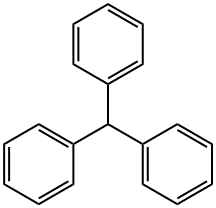
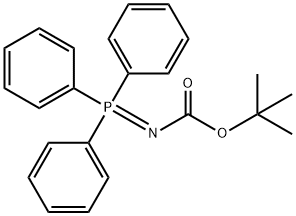
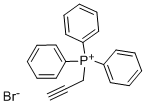

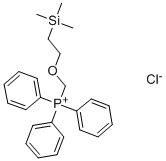

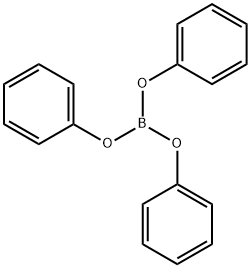
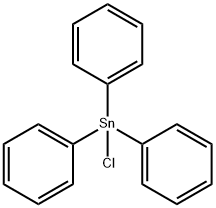
You may like
-
 595-91-5 98%View Details
595-91-5 98%View Details
595-91-5 -
 595-91-5 Triphenylacetic-acid 99%View Details
595-91-5 Triphenylacetic-acid 99%View Details
595-91-5 -
 Triphenylacetic acid 95% CAS 595-91-5View Details
Triphenylacetic acid 95% CAS 595-91-5View Details
595-91-5 -
 Triphenylacetic Acid CAS 595-91-5View Details
Triphenylacetic Acid CAS 595-91-5View Details
595-91-5 -
 3-(4-amino-1-oxoisoindolin-2-yl)-1-methylpiperidine-2,6-dione 98%View Details
3-(4-amino-1-oxoisoindolin-2-yl)-1-methylpiperidine-2,6-dione 98%View Details -
 20677-73-0 (2,2-diethoxyethyl)methylamine 98%View Details
20677-73-0 (2,2-diethoxyethyl)methylamine 98%View Details
20677-73-0 -
 3-(4-(hydroxyamino)-1-oxoisoindolin-2-yl)piperidine-2,6-dione 98%View Details
3-(4-(hydroxyamino)-1-oxoisoindolin-2-yl)piperidine-2,6-dione 98%View Details -
 57381-49-4 2-bromo-4-chlorobenzonitrile 98%View Details
57381-49-4 2-bromo-4-chlorobenzonitrile 98%View Details
57381-49-4
